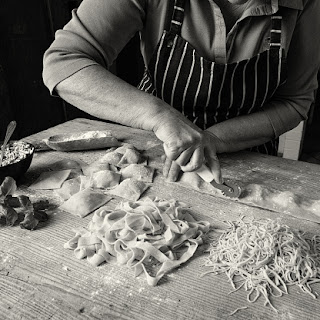Even though Bernadette’s parents were not animal rights
activists, nor kind people, they did love horses and dogs. Also whales and
dolphins. And lastly, lions and elephants. They were, naturally, vociferously
posed against hunting for sport and also against eating dogs and horses. On the
other hand, they always maintained, while presenting some rather startling
lines of reasoning, that one could eat cows and sheep and could hunt salmon and
tuna.
Now, despite Bernadette’s meticulous schooling by a posse of
classically trained monks, on her mother’s appointment, she found it difficult
to live with her parents’ incoherent beliefs about animals. Despite the fact
that she had been taught to argue deities into existence, her will out of
existence and to make injustices just, she simply could not make head or tail
out of how her parents thought about other sentient beings. The inductive
leaps, the contradictions, the strange favouritism and, generally, just the
tension between their hedonism and their compassion left her awe struck.
Bernadette, when she was awe struck, preferred it to be due to
dresses, food or wine. She was her father’s child in this regard.
It was, therefore, with some trepidation that Bernadette decided
to try her hand at vegetarianism. A sort of designer type, which permits the
consumption of anchovy. One of her tutors, a breatharian (who, naturally, has
recently shuffled off this mortal coil), had instructed her as to how one makes
a transition from one set of values to another. Given that there are many, many
sets of values, none of which have any firmer factual foundation than the next,
he always became very flustered when Bernadette asked him what was right and
what was wrong. What was good and what was bad? His eyes would widen and he
would breathlessly reply: ‘It is impossible to tell, Bernadette, with any
certainty. So, it is best to be flexible about good and bad. As long as your
beliefs all fit together nicely.’
So, Bernadette did not become a vegetarian because she thought
it was morally better. She became one because she believed her parents were
paragons of unreason, and she could not abide it. Like not abiding people who
wear stretched purple velvet and many bracelets, Bernadette could not abide the
sentimental underpinnings of her parents’ world view about animals. Neither of her
parents would ever wear such things, of course! They had better sense than
that. Her father, as we know, was a style icon, clad only in shades of black
all made of either of the finest Egyptian cotton or Chinese silk. Her mother,
eminent scholar and formidable intellect, wore mostly hooded capes of roughly
hewn cloth, in dark brown. Her only luxury being the satin slip between that
and her brown skin.
No, Bernadette’s vegetarianism would be analogous to crisp white
shirts with starched collars. It would the bedfellow of finely crafted wine and
slow fermented sourdough. It would be the favourite peer and confidante of a
perfectly roasted little quail. Metaphorically speaking.
On that day, the 16th day of December, Bernadette
became a vegetarian. One who eats anchovies; thus rendering her vegetarianism
like a Persian carpet.*
*The real reason is that she simply could not forego Caesar
salads nor spaghetti puttanesca.
Important
notices: The bakery will be closed on Christmas Day, Boxing Day and on New
Year’s Day. The restaurant will be open as per usual over this time (i.e. closed
on Mondays and Tuesdays and open for the rest). But the restaurant will close
for two weeks from the 15th of January, and open again on the 31st
of January.








